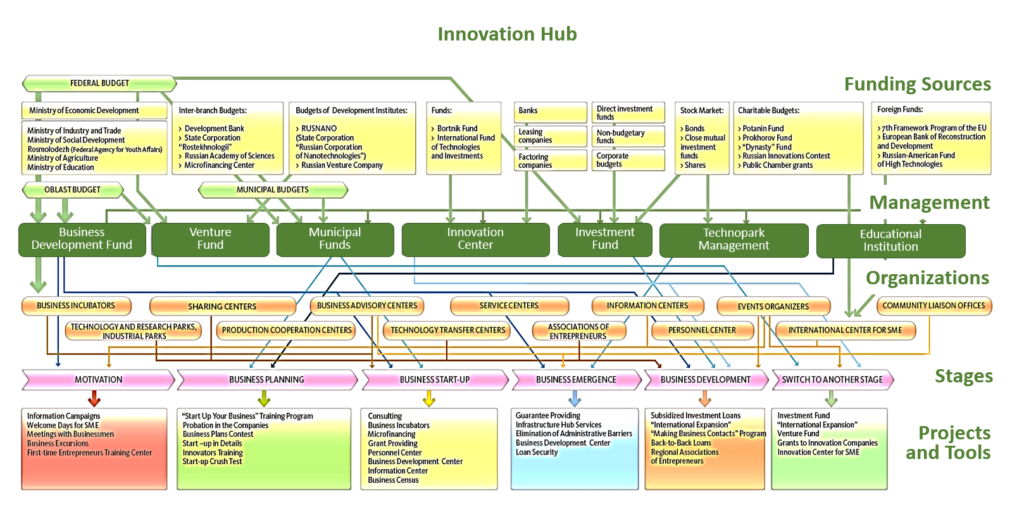
Building an Innovation Hub was a unique opportunity to develop a structured innovation pipeline, integrating stage-gate processes for all stages of innovation—ideation, evaluation, funding, development, commercialization, and scaling. We created and managed incubators, accelerators, technoparks, innovation centers, venture funds, educational institutions, and various innovation programs, tools, and events. Securing over $50 million from public and private sources was essential to funding these initiatives. Equally important were the over one hundred idea-crush tests, innovation forums, investment and venture forums, commercialization reactors, strategic sessions, conferences, workshops, and other innovation events. I’m happy to share my observations on the effectiveness of each.
If you ask me now about the most critical pillar of innovation development, my answer would always be infrastructure. Without structured pipelines to attract, evaluate, develop, and scale ideas, even the most promising concepts fail. The more ideas that flow into the system, the greater the chances of success. I was fortunate to build an ecosystem of organizations, tools, and programs that supported innovation at every stage. Within two years, it facilitated over a thousand projects, proving the power of well-designed infrastructure.
Among all the tools we developed, innovation events were the most powerful. These events gather, educate, and engage thousands of participants while attracting investors, policymakers, media, and industry leaders eager to collaborate and drive innovation forward. To accelerate innovation, start with an open innovation forum—invite researchers, entrepreneurs, investors, businesses, and even competitors. The broader the participation, the stronger the synergy, and the faster progress is made.
The next pillar of innovation is education. Managing innovation requires skills like idea generation, concept development, risk management, market research, prototyping, leadership, and execution—competencies that many researchers, startups, and innovators lack, and traditional education rarely covers. As our pipeline expanded, this knowledge gap became a major barrier. To address it, we launched an Innovation Management Academy, partnered with universities, and developed specialized training programs. Within a year, over a thousand specialists were ready to lead and support innovation initiatives, proving that structured education dramatically improves success rates.
Collaboration is another essential pillar. No single entity—no matter how well-funded or well-intentioned—can drive innovation in isolation. Breakthroughs happen at the intersection of disciplines, industries, and perspectives. Ecosystems thrive when researchers, entrepreneurs, investors, industry leaders, governments, and international organizations work together. The challenge isn’t just bringing stakeholders together but aligning their interests and ensuring collaboration leads to real outcomes.
One key insight is that building a single innovation infrastructure component—like an incubator—without an interconnected system is one of the least effective ways to foster innovation. Real innovation thrives in ecosystems where incubators, accelerators, co-working spaces, innovation centers, research acceleration units, and targeted events work together to support projects at every stage. These elements share functions, costs, and engagement activities, making an integrated system more efficient and impactful. Standalone initiatives often struggle with limited reach and fragmented support, while a well-structured ecosystem fosters cross-industry collaboration, enables seamless transitions from ideation to commercialization, and ensures that startups, researchers, and entrepreneurs receive the right support at the right time. By connecting multiple components into a cohesive framework, organizations can optimize resources, amplify long-term impact, and create an environment where ideas don’t just emerge—they scale into real-world solutions.
